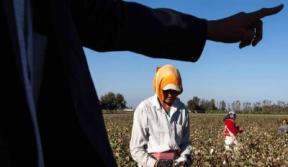While this legislation is profitable for investors and is bringing garment manufacturing jobs to the nation, workers rights and other such groups are adamant that a sweatshop-based development model is not suitable for the positive advancement of Haiti’s economy and people. Yannick Etienne, an organizer with the labor rights group Batay Ouvriyè believes the U.S. legislation will bring profits to the big companies while causing instability and poor workplace standards. She advocates for worldwide solidarity to give Haitians union rights and the power to change their situations. Batay Ouvriyè led a successful campaign in 2006 against CODEVI, a subsidiary of the textile manufacturing giant Grupo M, which had set up operations in Haiti’s first export processing zone and was violating trade union rights. The workers rights organization believes that the post-earthquake reconstruction period is an opportunity to restructure the labor system in Haiti.
Haiti’s factory workers are victims of very low pay and tough conditions, forced to work extremely long days so that employers are able to skirt laws that would require higher compensation. One garment worker reported that she makes 125 gourdes ($3.15 USD) a day, which is the Haitian minimum wage for piece-rate workers. After tax, her take-home is approximately $14.75 a week. With a day's pay she can buy a cupful of rice, transport via group taxi, and pay down debt on her now-destroyed apartment. In October 2010 this wage was nominally raised to 150 gourdes a day, but still remains considerably below the national minimum wage because private enterprises successfully lobbied the government.
Because so many foreign companies are coming in, ensuring responsibility and accountability in the work place have become huge challenges. Better Work Haiti, a partnership between the ILO and the International Finance Corporation (IFC), works to manage information so that enterprises can share assessments with their buyers and thus be held accountable for their practices. The organizations most recent report assessed individual factories, and reports that so far the factories in its program are making progress, with further strides needing to be made.
On January 12, 2011 an agreement was signed between the Interim Haiti Recovery Commission, joined by the Inter-American Development Bank and Haitian business leaders, and the chairman of Sae-A Trading Co. Ltd, which is one of South Korea’s largest companies. The agreement, which will make Sae-A Trading the largest private employer in Haiti, outlines a plan to build the North Industrial Park, which, in addition to factories, will also include 5,000 homes, making it Haiti’s first textile mill. They hope this project will inspire companies from all over the world to invest in Haiti and help bring about economic development for the impoverished country. Sae-A Trading Co. Ltd will be the anchor tenant in the industrial park, employing around 20,000 people and generating $500 million in wages and benefits over the next 10 years. It hopes bring in additional textile manufacturers to the park who could benefit from the duty-free access to the US clothing market, in total creating as many as 120,000 jobs. But is this all good news? Sae-A Trading has a questionable labor record, manufacturing clothes for Wal-Mart, Target, Gap, and other big companies.
A further issue for Haiti is that general unemployment rates remain overwhelmingly high, which has lead to problems of child labor and exploitation. Many children have been abandoned or orphaned, and thus are pushed into the labor market. They are forced to work long hours for little pay in conditions lacking the most minimum safety and sanitation regulations. Kids have been found to be working in the construction sector, in agriculture, and as prostitutes, many of which have left Haiti for the Dominican Republic to enter the sex tourism industry.
The rampant poverty in Haiti, which was exacerbated by the earthquake, also has led to parents sending their children to work as domestic servants when they cannot support them. Known as restavek, these children are treated like slaves and, especially after the earthquake, are routinely denied basic needs like food or wages. Additionally, as times are tougher than ever, many of these restavek have been abandoned in the streets since their employers can’t afford to keep them any longer.


Comments
re: Labor Rights in Haiti: More Than One Year After the Earthqua
This was a great article. I would love to cover this issue with my students. Could anyone point me to some specific studies and reports? I would also like to get some specifics on the products that are being made and who makes them?